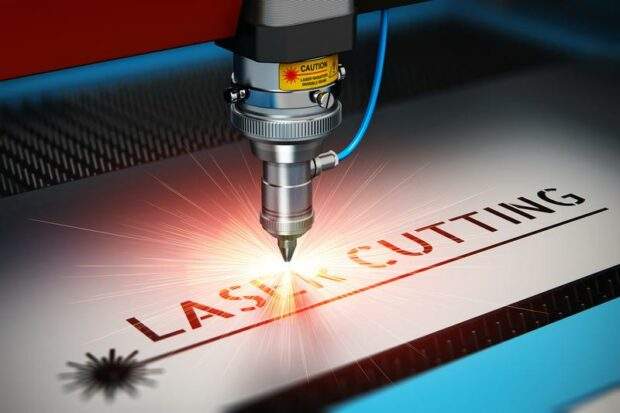A laser engraving business requires a little research to begin. It may be one of the most profitable business ideas, which requires only a small investment in a growing industry.
In recent years, laser engraving and marking have quickly grown to be a highly appealing industry for many people.
Traditional businesses are becoming more aware of the potential of this technology, as well as the result of enhanced laser techniques and cheaper costs of a laser engraving machine.
You can establish a niche for your local area as a laser engraver and fulfill your long-held ambition to be your own boss.
To assist you in starting a laser engraving and cutting business, we are here to provide you with thorough and detailed step-by-step guidance.
We will delve more into each phase to identify the difficulties, what you must do, and how you may master them to reach long-term success in this small business.
Reasons to Start a Laser Engraving Business

It is better to understand why you should start a laser engraving business before you get into the specific processes.
Profitability
One benefit of starting a laser engraving business is profitability! The market for customized products is substantial and expanding.
Due to the high product ROI, laser engraver firms are extremely profitable in addition to tapping into attractive industries.
Customers are willing to pay more money for products with personalization since it boosts their perceived worth!
Speed
Due to the laser engraving machine’s speedy, accurate, and consistent personalization capabilities, a laser engraving business can produce substantial profit margins.
You can quickly change plain surfaces with laser engraving equipment! The laser works faster than any traditional hand engraver, allowing you to work more quickly and effectively.
Overhead Costs
The machine itself costs once. Given this, it makes sense to spend more money on high-quality hardware rather than putting the quality of the final product at risk with bad quality.
After all, laser engraving machines offer a high return on investment, speed, and productivity, allowing you to break even quickly and start growing your company.
How to Start a Laser Engraving Business

By following the detailed step-by-step guide to begin a laser engraving business, we’ll discuss which target market has the greatest potential for your investment.
Starting a business plan for laser engraving involves eight primary steps. Please read these instructions to ensure that you take the right path and make the appropriate plan.
Beginners frequently suffer as a result of selecting the incorrect machine, ignoring the prerequisites, choosing the incorrect niche, and other mistakes.
Therefore, you need to have a distinct idea of what you want at the end. You may use these procedures to launch a profitable laser engraving business from the beginning.
Step 1 – Select a Laser Engraving Machine
Many kinds of laser machines are available, making it challenging to choose the right machine for your cutting business. Here are some of the best laser engravers you can get!
Since your primary investment in laser engraving businesses will be laser engraving machines, this is the most crucial step.
Laser engraving machines are now available for a fraction of what they originally cost. The size of the laser engravers is very important since it affects what laser products you can create.
A laser cutter that has an adjustable bed may provide more flexibility. The amount of laser power and watts your laser machine has also affects how effectively you can operate it.
The materials you can employ with your laser machine must be identified, and raw materials are your other major expense.
A computer, photo editing software, a content management system, web hosting, and office supplies are further necessities for starting your laser business.
Step 2 – Learn How to Use a Laser Engraver
It is insufficient to have laser machines when starting a laser engraving business simply. There are other things you must consider. But don’t worry; it is easy to learn.
We’ll go through a few topics you should consider when starting your laser engraving business. You should learn as much as you can about these.
a. Materials and Testing
You need to be aware of the materials your laser engraving machine can etch. There are different types of machines on the market specifically for materials.
You may engrave wood, plywood, glass, ceramics, paper, etc., using the technology in a diode laser machine.
You can engrave anything with a CO2 laser machine, including wood, acrylic, glass, leather, cardboard, paper, stone, metal, rubber, food, and cloth.
Perform a speed and power test on a sample of that material before you begin engraving cutting designs with the laser machine. You can use it to choose the ideal engraving settings.
Read our articles on the best laser engraver for metal and the best laser engraver for wood if you want to engrave metal and wood, respectively.
b. Software
Additionally, you must use software that the laser machine can process. The specific software on xTool machines is user-friendly for beginners.
The software is not overly complicated, but it will take some effort to learn how to use it. Once you get going, it will be easy to operate the equipment.
c. Safety equipment
You must take necessary precautions to ensure your safety before operating the machine. To safeguard your eyes from the laser, you need first put on safety glasses.
Clear the area around the machines. There shouldn’t be any flammable substances close by. Keep your kids and other persons out of the room, and never leave the machine unattended.
You should also never create new materials before learning whether they are safe for laser machines. Some materials may quickly break once you use them.
Some materials may produce toxic fumes, so you should also know how to filter them and improve the ventilation of the area where you are using the machine.
With all safety equipment in place, you can start creating, engraving, and selling.
Step 3 – Know Your Market
Laser engraving may be quite profitable in various markets, from producing lovely employee of the month plaques to etching codes into manufacturing tools.
Business is about what you can accomplish for society, not making quick money. It involves providing crazy solutions to minor problems for your industrial clients.
When you start your own business, you should offer solutions to unsolvable challenges for industry customers. At reasonable profit margins, of course.
You must carefully define your target market and the services they require from your laser business. In order to operate your laser cutter and sell, you must possess technical knowledge.
No matter how low your price is, you still need to have insight. Get to know the thoughts, worries, and preferences of your potential customers and market.
Step 4 – Pricing Your Laser Engraving Business
Just one-half of the struggle is marketing. The price of laser engraving is a major factor in your firm, even if the cost to start one is low and your potential profit margins are high.
For instance, when choosing a laser engraver to create presents and trophies, many consumers are concerned with price. To keep your cash flow steady, know your selling price.
If you want to compete with other companies in this market, you’ll need to figure out how to keep your cost down while you sell a high-quality service.
On the other side, business and industrial clients could mistakenly form the opinion that low pricing indicates poor quality.
They’ll probably consider reliability, speed, and accuracy. When you first start the company, your website, communications, and samples must show the quality you offer.
Step 5 – Register Your Laser Engraving Business

You should register your laser marking businesses as soon as possible if you intend to become a high-flying laser engraving professional.
If something goes wrong and a client sues you, you could be held personally liable if you don’t have a business registration.
Form a legal entity if everything checks out. Creating a limited liability company is a great option, as it removes the possibility of you being personally liable in case of problems.
It is still viable to start a laser engraving firm as a sole proprietorship as long as you want to create a foundation before putting better structures in place later.
In addition to enabling you to comply with other legal requirements, getting registered also enables you to open a business bank account, file taxes, and seek credit.
Step 6 – Go to the Market
Selling products is an important step in a laser marking firm that struggles a lot. Numerous items can be produced, but it’s a waste of time and money if you can’t sell them.
There should be no corners cut if you wish for customers to avail of your services. You need to test everything, from modest local stores to online marketplaces.
You may start by attempting to sell goods online. Listing a product won’t cost much, and after you start receiving orders, you may start creating the item.
The ideal location to launch your laser engraving business is on social media. If you know how to use the technology to your advantage, you may attract a lot of clients.
Using the assistance of friends and family is another approach to receiving immediate sales at an early stage. You can inform them about your goods and urge them to spread the word.
Visit the local shops and let them know what your machines are capable of. You can also create the goods they can stock. These products are needed by businesses as well.
Step 7 – Grow Your Business
You must progressively expand your laser marking and cutting business if you want to make a livelihood from it. You need a few trustworthy clients or partners if you want to grow.
If you make personalized gifts and other products, you can get in touch with other businesses and let them know about the personalized presents and boxes you create.
Wall clocks, toys, made-to-order items, home accessories, and many other items are also needed by nearby establishments. You might ask about their needs.
Your business will be more reliable if you have the most trustworthy clients and collaborators. You’ll have a steady flow of income.
Step 8 – Build Your Brand Identity
Your brand will determine the success or failure of your laser engraving and marking. Decide on your artistic signature and the distribution method for it.
Develop and adhere to a business philosophy. Some clients would purchase from you more readily than they would if you lacked a vision, values, and ambitions.

Frequently Asked Questions (FAQs)
Got some more questions about this business? Here are our frequently asked questions.
Is a Laser Engraving Business Profitable?
This business generates a good profit for those who are willing to take a chance thanks to the great appeal of items manufactured with laser engraving and marking.
For instance, if you are using $50 worth of stock material to create a piece, you may deduct your expenses to get at a production cost of $75 and still sell the item for $125.
That is a staggering 40% margin, and you can increase this even further based on your research analysis.
What Can I Engrave With My Laser Machine?
Some of the most well-liked business opportunities for laser engraving are listed below. You need to know how to design it and sell products:
Company logos
Signage
Christmas ornaments
Spice jars
QR codes and barcodes for industrial clients
Photo engraving
Personalized products
Business cards
Wine glasses
Key chains
Customized jewelry
Theme toy boxes
Coasters
Artwork
Medical devices
Celebration and special occasion gifts
Custom metal cups
In our article on laser engraving ideas, you may check out more laser engraved products.
Conclusion
Your ideal business venture may be a laser engraving one.
You must comprehend the needs, preferences, and opportunities that laser marking technologies offer your target audience.
You need to do your homework to determine what kind of machine will help you meet or even surpass your customer’s expectations for the lowest possible cost and highest possible profit.
Regardless of where you are, this is a fantastic opportunity because of constant machine costs, low barriers to entry, and a largely unexplored market.





